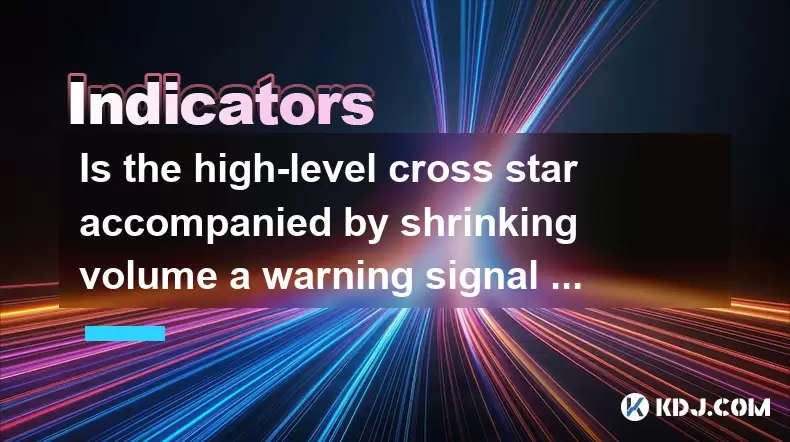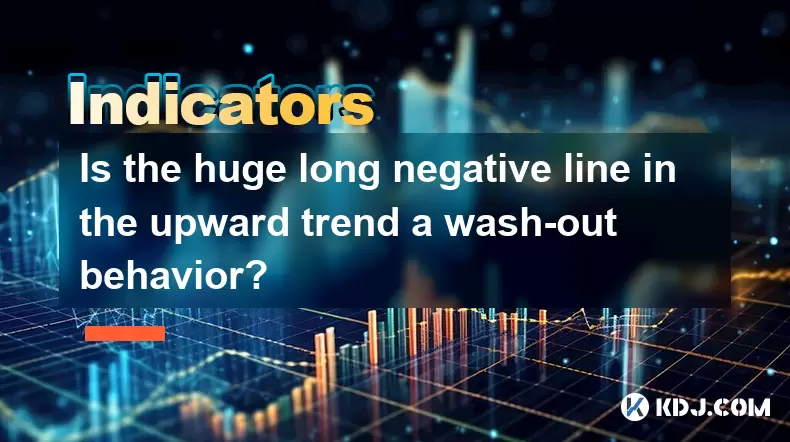-
 Bitcoin
Bitcoin $99,594.2189
-3.59% -
 Ethereum
Ethereum $2,188.5793
-9.00% -
 Tether USDt
Tether USDt $1.0001
-0.02% -
 XRP
XRP $1.9745
-5.82% -
 BNB
BNB $608.9511
-3.73% -
 Solana
Solana $130.4575
-5.93% -
 USDC
USDC $1.0000
0.01% -
 TRON
TRON $0.2637
-3.59% -
 Dogecoin
Dogecoin $0.1493
-5.97% -
 Cardano
Cardano $0.5322
-6.72% -
 Hyperliquid
Hyperliquid $33.9044
3.33% -
 Bitcoin Cash
Bitcoin Cash $449.6411
-5.46% -
 UNUS SED LEO
UNUS SED LEO $8.9629
0.43% -
 Sui
Sui $2.3943
-8.35% -
 Chainlink
Chainlink $11.4402
-7.83% -
 Stellar
Stellar $0.2241
-6.49% -
 Avalanche
Avalanche $16.1489
-4.24% -
 Toncoin
Toncoin $2.7182
-5.94% -
 Shiba Inu
Shiba Inu $0.0...01040
-5.72% -
 Litecoin
Litecoin $78.7882
-4.07% -
 Ethena USDe
Ethena USDe $1.0004
-0.01% -
 Hedera
Hedera $0.1305
-7.45% -
 Monero
Monero $297.0030
-5.32% -
 Dai
Dai $0.9997
-0.02% -
 Polkadot
Polkadot $3.1834
-6.03% -
 Bitget Token
Bitget Token $3.9788
-7.03% -
 Uniswap
Uniswap $6.1327
-10.62% -
 Pepe
Pepe $0.0...08689
-8.30% -
 Pi
Pi $0.4826
-9.65% -
 Aave
Aave $219.8043
-9.69%
How to use SAR in short-term futures?
SAR helps traders spot potential price reversals in short-term crypto futures, crucial for timely trading decisions in fast markets.
May 24, 2025 at 10:28 am

Introduction to SAR in Short-Term Futures Trading
The Parabolic Stop and Reverse (SAR) indicator, commonly known as SAR, is a popular tool among traders in the cryptocurrency market, especially when dealing with short-term futures. SAR helps traders identify potential reversals in the price direction of an asset, which is crucial for making informed decisions in the fast-paced environment of futures trading. In this article, we will explore how to effectively use the SAR indicator in short-term futures trading within the cryptocurrency market.
Understanding the SAR Indicator
Before diving into its application, it's essential to understand how the SAR indicator works. The SAR indicator is plotted as a series of dots on a price chart, which move closer to the price as the trend continues. When the dots flip from being below the price to above it, or vice versa, it signals a potential trend reversal. The SAR indicator is particularly useful in trending markets, making it a valuable tool for short-term futures trading in cryptocurrencies.
Setting Up the SAR Indicator on Your Trading Platform
To use the SAR indicator effectively in short-term futures trading, you need to set it up on your trading platform. Here's how you can do it:
- Open your trading platform and navigate to the chart of the cryptocurrency futures you are interested in trading.
- Select the 'Indicators' menu and search for the 'Parabolic SAR' or simply 'SAR' indicator.
- Add the indicator to your chart. Most platforms allow you to customize the settings, such as the acceleration factor and the maximum step, but for beginners, the default settings are usually sufficient.
- Observe the SAR dots on your chart. They will appear either above or below the price, depending on the current trend.
Using SAR for Entry and Exit Points in Short-Term Futures
Once the SAR indicator is set up, you can use it to determine entry and exit points for your short-term futures trades. Here's how:
- Entry Points: When the SAR dots flip from being above the price to below it, it indicates a potential bullish reversal. This could be a signal to enter a long position in your short-term futures trade. Conversely, if the dots flip from below the price to above it, it suggests a bearish reversal, signaling an opportunity to enter a short position.
- Exit Points: The SAR indicator can also help you determine when to exit your trades. If you are in a long position and the SAR dots flip above the price, it might be time to exit to lock in profits or cut losses. Similarly, if you are in a short position and the dots flip below the price, consider exiting your trade.
Combining SAR with Other Indicators for Enhanced Accuracy
While the SAR indicator can be powerful on its own, combining it with other technical indicators can enhance its effectiveness in short-term futures trading. Here are some popular combinations:
- SAR and Moving Averages: Using a moving average alongside the SAR can help confirm trend directions. For instance, if the SAR indicates a bullish reversal and the price is above a key moving average, it strengthens the signal to enter a long position.
- SAR and RSI: The Relative Strength Index (RSI) can help you gauge the momentum of the price movement. If the SAR signals a reversal and the RSI is in overbought or oversold territory, it can provide additional confirmation for your trade entry or exit.
- SAR and Bollinger Bands: Combining SAR with Bollinger Bands can help you identify potential breakout points. If the SAR signals a reversal near the upper or lower Bollinger Band, it can be a strong indication of a significant price move.
Practical Example of Using SAR in Short-Term Futures Trading
To illustrate how to use the SAR indicator in a real-world scenario, let's walk through an example of trading Bitcoin futures:
- Step 1: You open the chart for Bitcoin futures and add the SAR indicator. You notice the SAR dots are currently below the price, indicating a bullish trend.
- Step 2: As you monitor the chart, you see the SAR dots begin to move closer to the price, signaling that the trend might be losing momentum.
- Step 3: Suddenly, the SAR dots flip above the price, indicating a potential bearish reversal. You decide to enter a short position on Bitcoin futures.
- Step 4: You set a stop-loss order just above the recent high to manage your risk. As the price continues to fall, you monitor the SAR dots.
- Step 5: When the SAR dots flip back below the price, you exit your short position, securing your profits.
Managing Risk with SAR in Short-Term Futures
Risk management is crucial in short-term futures trading, and the SAR indicator can be a useful tool in this regard. Here's how you can use SAR to manage your risk:
- Setting Stop-Loss Orders: When entering a trade based on an SAR signal, set your stop-loss order just beyond the SAR dot in the opposite direction of your trade. For example, if you enter a long position and the SAR dots are below the price, place your stop-loss order just below the SAR dot.
- Adjusting Stop-Loss Orders: As the trade progresses, you can adjust your stop-loss order to trail the SAR dots. This allows you to lock in profits while still giving the trade room to breathe.
- Position Sizing: Use the SAR indicator to help determine the appropriate size of your position. If the SAR signals a strong trend, you might consider increasing your position size, but always within your risk tolerance.
Frequently Asked Questions
Q1: Can the SAR indicator be used in all market conditions?
A1: The SAR indicator is most effective in trending markets. In sideways or choppy markets, the SAR can generate false signals, so it's important to use it in conjunction with other indicators to confirm trends.
Q2: How often should I check the SAR indicator for short-term futures trading?
A2: For short-term futures trading, it's advisable to check the SAR indicator frequently, ideally every few minutes, to stay updated on potential trend reversals and adjust your trades accordingly.
Q3: Is the SAR indicator suitable for beginners in futures trading?
A3: While the SAR indicator can be useful for beginners, it's important to understand its limitations and combine it with other tools. Beginners should start with a demo account to practice using the SAR indicator before trading with real money.
Q4: Can the SAR indicator be used for long-term futures trading?
A4: The SAR indicator is primarily designed for short-term trading due to its sensitivity to price movements. For long-term futures trading, other indicators like moving averages or trend lines might be more suitable.
Disclaimer:info@kdj.com
The information provided is not trading advice. kdj.com does not assume any responsibility for any investments made based on the information provided in this article. Cryptocurrencies are highly volatile and it is highly recommended that you invest with caution after thorough research!
If you believe that the content used on this website infringes your copyright, please contact us immediately (info@kdj.com) and we will delete it promptly.
- Altcoins Under Pressure: Cardano and XRP Face Critical Tests
- 2025-06-23 12:25:12
- Rare Coin Fever in Wiltshire: Auctions, Errors, and Olympic Gold!
- 2025-06-23 12:25:12
- XRP Price Under Pressure: War Fears and Market Sentiment
- 2025-06-23 12:30:12
- HAI Token Private Key Leak: What Happened and How to Stay Safe
- 2025-06-23 12:45:12
- Texas Goes All In: Bitcoin Reserve Signals Big State Embrace
- 2025-06-23 12:45:12
- Pi Network's Price Plunge: Crash, Scammer Accusations, and What's Next?
- 2025-06-23 13:05:12
Related knowledge

Is it effective to support the average price line of the time-sharing chart multiple times?
Jun 23,2025 at 01:36pm
Understanding the Average Price Line in Time-Sharing ChartsIn cryptocurrency trading, time-sharing charts refer to real-time price charts that display price movements over short intervals, often within a single trading day. Within these charts, the average price line, also known as the Volume Weighted Average Price (VWAP), is a commonly used technical i...

The positive line with large volume the next day of the low-level inverted hammer line confirms the reversal?
Jun 23,2025 at 01:21pm
Understanding the Low-Level Inverted Hammer LineThe inverted hammer line is a single candlestick pattern that typically appears at the end of a downtrend. It has a small real body near the bottom of the trading range and a long upper shadow, indicating that bulls attempted to push prices higher but were met with selling pressure. When this pattern forms...

Is the high-level cross star accompanied by shrinking volume a warning signal of peaking?
Jun 23,2025 at 01:28pm
Understanding High-Level Cross Star PatternsIn the world of cryptocurrency trading, candlestick patterns are essential tools for technical analysis. One such pattern is the high-level cross star, which appears as a doji or near-doji candle at a significant resistance level. This pattern often indicates indecision in the market and can be interpreted as ...

Is the huge long negative line in the upward trend a wash-out behavior?
Jun 23,2025 at 12:49pm
Understanding the Long Negative Candlestick in an Uprising TrendA long negative candlestick, often referred to as a long red or bearish candle, appearing during an upward trend can raise concerns among traders and investors. This pattern typically indicates a sudden and significant drop in price after a period of rising prices. It is often interpreted a...

Can the EXPMA golden cross stand on the 5-day line at the same time?
Jun 23,2025 at 11:42am
Understanding the EXPMA Indicator in Cryptocurrency TradingThe Exponential Moving Average (EXPMA) is a popular technical analysis tool used by cryptocurrency traders to identify trends and potential reversal points. Unlike simple moving averages, the EXPMA gives more weight to recent price data, making it more responsive to current market conditions. In...

Does the second surge in the RSI overbought zone induce more?
Jun 22,2025 at 08:35am
Understanding the RSI Overbought ZoneThe Relative Strength Index (RSI) is a momentum oscillator commonly used in technical analysis to measure the speed and change of price movements. It ranges from 0 to 100, with values above 70 typically considered overbought and values below 30 considered oversold. When the RSI enters the overbought zone for the firs...

Is it effective to support the average price line of the time-sharing chart multiple times?
Jun 23,2025 at 01:36pm
Understanding the Average Price Line in Time-Sharing ChartsIn cryptocurrency trading, time-sharing charts refer to real-time price charts that display price movements over short intervals, often within a single trading day. Within these charts, the average price line, also known as the Volume Weighted Average Price (VWAP), is a commonly used technical i...

The positive line with large volume the next day of the low-level inverted hammer line confirms the reversal?
Jun 23,2025 at 01:21pm
Understanding the Low-Level Inverted Hammer LineThe inverted hammer line is a single candlestick pattern that typically appears at the end of a downtrend. It has a small real body near the bottom of the trading range and a long upper shadow, indicating that bulls attempted to push prices higher but were met with selling pressure. When this pattern forms...

Is the high-level cross star accompanied by shrinking volume a warning signal of peaking?
Jun 23,2025 at 01:28pm
Understanding High-Level Cross Star PatternsIn the world of cryptocurrency trading, candlestick patterns are essential tools for technical analysis. One such pattern is the high-level cross star, which appears as a doji or near-doji candle at a significant resistance level. This pattern often indicates indecision in the market and can be interpreted as ...

Is the huge long negative line in the upward trend a wash-out behavior?
Jun 23,2025 at 12:49pm
Understanding the Long Negative Candlestick in an Uprising TrendA long negative candlestick, often referred to as a long red or bearish candle, appearing during an upward trend can raise concerns among traders and investors. This pattern typically indicates a sudden and significant drop in price after a period of rising prices. It is often interpreted a...

Can the EXPMA golden cross stand on the 5-day line at the same time?
Jun 23,2025 at 11:42am
Understanding the EXPMA Indicator in Cryptocurrency TradingThe Exponential Moving Average (EXPMA) is a popular technical analysis tool used by cryptocurrency traders to identify trends and potential reversal points. Unlike simple moving averages, the EXPMA gives more weight to recent price data, making it more responsive to current market conditions. In...

Does the second surge in the RSI overbought zone induce more?
Jun 22,2025 at 08:35am
Understanding the RSI Overbought ZoneThe Relative Strength Index (RSI) is a momentum oscillator commonly used in technical analysis to measure the speed and change of price movements. It ranges from 0 to 100, with values above 70 typically considered overbought and values below 30 considered oversold. When the RSI enters the overbought zone for the firs...
See all articles

























































































